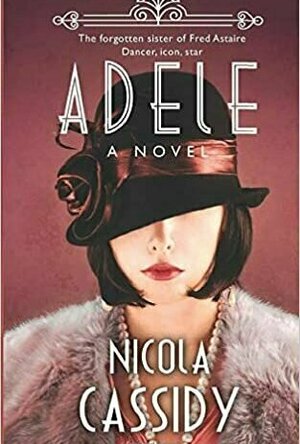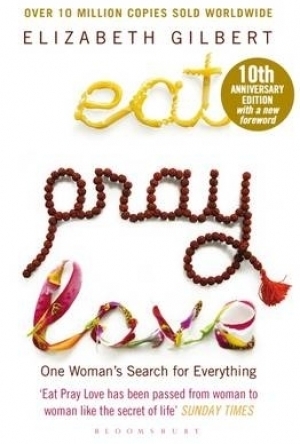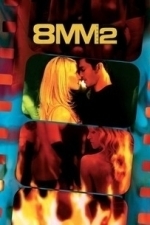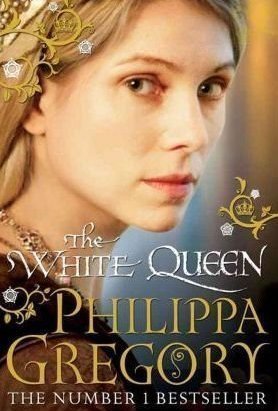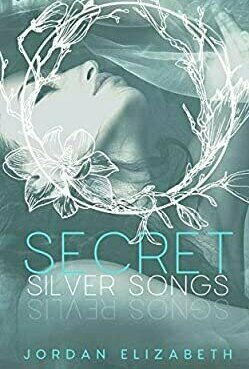Search
Search results
Lottie disney bookworm (1056 KP) rated Adele: The Forgotten Sister of Fred Astaire in Books
May 16, 2020
Thank you to Booksirens for sending me an advance review copy for free. I am leaving this review voluntarily.
I was intrigued by Adele when I first applied for an ARC: it isn't my usual kind of read but although I have heard of Fred Astaire (mainly from my grandma) I didn't know anything about his sister Adele, so I decided to give the book a go. Wow I am glad I did!
Nicola Cassidy brings the Astaires to life through her amazing writing. The majority of the novel is told from Adele's perspective: starting from when she is just a child. Cassidy, in turn, writes in a childish, conversationalist prose with this becoming steadily more mature along with our protagonist . By presenting Adele's life through her own eyes the reader feels her pain intensely: particularly towards the end of the novel. I'm not ashamed to say I was openly weeping at certain points.
Some critics may say that anyone can take a universally emotive topic and make you cry during a story. Well Cassidy goes one step further: through the character of Adele's father and the contrasting relationship she has with her mother and brother, the reader also witnesses the overwhelming feeling of absence- almost numbness towards the patriarchal figure. Similarly we also feel apprehension when we can recognise history repeating itself before Adele does: we can predict that this ending will not be an altogether happy one and it is this foresight and empathy that Nicola Cassidy creates which is unparalleled with any other book I have read recently.
Adele (the novel and the character) has glitz, glamour, heartache and inspiration. However, the novel has a steadying undertone with the changing effect of World War Two and the presence of several working class, dedicated women at the heart of the story.
Nowadays, it may be Fred Astaire who springs to mind but it was Adele who paved the way: it's about time she was given the chance to step out from her brother's shadow and regain the spotlight once again.
I was intrigued by Adele when I first applied for an ARC: it isn't my usual kind of read but although I have heard of Fred Astaire (mainly from my grandma) I didn't know anything about his sister Adele, so I decided to give the book a go. Wow I am glad I did!
Nicola Cassidy brings the Astaires to life through her amazing writing. The majority of the novel is told from Adele's perspective: starting from when she is just a child. Cassidy, in turn, writes in a childish, conversationalist prose with this becoming steadily more mature along with our protagonist . By presenting Adele's life through her own eyes the reader feels her pain intensely: particularly towards the end of the novel. I'm not ashamed to say I was openly weeping at certain points.
Some critics may say that anyone can take a universally emotive topic and make you cry during a story. Well Cassidy goes one step further: through the character of Adele's father and the contrasting relationship she has with her mother and brother, the reader also witnesses the overwhelming feeling of absence- almost numbness towards the patriarchal figure. Similarly we also feel apprehension when we can recognise history repeating itself before Adele does: we can predict that this ending will not be an altogether happy one and it is this foresight and empathy that Nicola Cassidy creates which is unparalleled with any other book I have read recently.
Adele (the novel and the character) has glitz, glamour, heartache and inspiration. However, the novel has a steadying undertone with the changing effect of World War Two and the presence of several working class, dedicated women at the heart of the story.
Nowadays, it may be Fred Astaire who springs to mind but it was Adele who paved the way: it's about time she was given the chance to step out from her brother's shadow and regain the spotlight once again.
Gareth von Kallenbach (980 KP) rated Free State of Jones (2016) in Movies
Aug 6, 2019
When we look at the Civil War period, we are often confronted with numbers: the numbers of the dead, the numbers of those fighting, the pay, the amount of bullets and munitions used. One thing we rarely discuss is depth with regard to the people and circumstances surrounding the war. We are concerned with particular battles and what major leaders were victorious or fell. We, either through school or the collective of movies created about the period, do not get to see the people for who they are and the variables surrounding their existence during this period. We do not have the ability to comprehend how the war affected them in losing their property, loved ones, or even how they face starvation and violence. We don’t get the chance to see slaves other than a myopic, generalized representation that doesn’t show us how they were able to survive in the face of danger multiple sides. The Free State of Jones corrects many of the mistakes and missed opportunities of previous films, of which there are many, that deal with slavery, the Civil War, the Reconstruction Era, and the South.
In The Free State of Jones, Matthew McConaughey plays Newt Knight a southerner who begins to see the hypocrisy of the Civil War and deserts from the Confederate Military. Upon his return he seeks to support his relatives and neighbors who are being taken advantage of by the Confederacy. His movement grows to where he and an army of men and women of different backgrounds begin fighting back against the Confederacy in the attempt to assert their autonomy and sovereignty.
The film is beautifully shot and allows for the display of serenity during all of the chaos that is shown throughout. One strength that director Gary Ross demonstrates is his ability to demonstrate that there were many layers to the War. Slavery is the central theme and he goes beyond this to show how much race played into the war and its lasting effect that we are still dealing with today. He points out through the film that we had a moment to be a transformative nation, but there were so many people who wanted to the status quo to remain that they prevented any and all social progress that seemed to threaten their perceived social standing. With respect to slavery, Free State gives voices to slaves and Freedmen during the period rather than having them on the periphery or invisible all together. The film offers an authenticity and depth that many films of this period are fearful or reluctant to engage in. There is warfare, there is violence, there is struggle, but the film offers more. It shows humanity. It demonstrates how people recognized what was wrong and took a stand. It also does not play with the history in order to have issues romanticized. It is honest in its application and for some, that will not sit well.
In The Free State of Jones, Matthew McConaughey plays Newt Knight a southerner who begins to see the hypocrisy of the Civil War and deserts from the Confederate Military. Upon his return he seeks to support his relatives and neighbors who are being taken advantage of by the Confederacy. His movement grows to where he and an army of men and women of different backgrounds begin fighting back against the Confederacy in the attempt to assert their autonomy and sovereignty.
The film is beautifully shot and allows for the display of serenity during all of the chaos that is shown throughout. One strength that director Gary Ross demonstrates is his ability to demonstrate that there were many layers to the War. Slavery is the central theme and he goes beyond this to show how much race played into the war and its lasting effect that we are still dealing with today. He points out through the film that we had a moment to be a transformative nation, but there were so many people who wanted to the status quo to remain that they prevented any and all social progress that seemed to threaten their perceived social standing. With respect to slavery, Free State gives voices to slaves and Freedmen during the period rather than having them on the periphery or invisible all together. The film offers an authenticity and depth that many films of this period are fearful or reluctant to engage in. There is warfare, there is violence, there is struggle, but the film offers more. It shows humanity. It demonstrates how people recognized what was wrong and took a stand. It also does not play with the history in order to have issues romanticized. It is honest in its application and for some, that will not sit well.
Rachel King (13 KP) rated Eat Pray Love: One Woman's Search for Everything in Books
Feb 11, 2019
I started this book with the warning that the author comes off as very selfish. Considering that this is a memoir, I don't really see what the big deal is. The best way for me to review this book is in three parts, since the book is divided that way. The epiphany that Gilbert has about herself at the beginning of the book I felt I could relate to in some ways - I know what it feels like to spend years gearing yourself up to do something at a certain age, only to arrive and realize that you don't want to do it - and be shocked by this realization. The specifics of her realization were quite different from mine, as I have always wanted children and I could not imagine never having any, but what bugged me was that her husband could not grasp this epiphany of hers. Luckily, the book was more about her than about her mysterious ex-husband.
As for her trip to Italy, I loved every page of it. I felt like I was living it through her words and experiences, wishing I was there with her to taste the food and learn the language. Italy has always been a dream of mine, though I intend to visit the sites, too, not just experience the food and language. I found the scene in which she is fasinated by the Italian man cursing at the soccer game to be a great example of her love for Italy and something I would probably do myself. I was only disappointed that this section was not longer and she did not go into greater detail about everything that she ate. I will certainly have to remember to try the pizza in Naples.
I found her trip to India the most difficult to get through, especially when I reached the point in which she decides to not do any traveling around India - a major disappointment for me. Richard from Texas was the highlight of this section for me, since he seemed to be the most down-to-earth of all the interesting people she meets here, and offers her the soundest advice. The focus of this section was on spirituality, but as it is heavily influenced by Eastern religions, I found myself disagreeing with many of her personal beliefs, even though I admired her dedication and determination. Her views of "kundalini shakti" are a perfect example - Christianity teaches that this is a demonic / occult practice, but Gilbert believes that it is the same thing as the Holy Spirit. This section alone is proof enough for me as to why I stay away from philosophical books.
Her final trip to Bali, Indonesia was educational in many ways, as I knew nothing about the culture and history there. Her medicine man, Ketut Liyer, was quite an interesting character, and I really felt for the young man she befriended, Yudhi, who was forced unfairly to leave the United States thanks to the Homeland Security Act. I find it interesting that she failed in completing her year of celibacy, but I'm sure those Brazilian men can be quite tempting when they want to be. Those who say that Gilbert appears very selfish in this book seem to ignore that she helped a divorced woman - an unheard-of thing in Bali - with three children, obtained a piece of land for her own home and business before Gilbert had to leave the country.
Overall, this year in the life of Elizabeth Gilbert was certainly a memorable one, and one that many, many other women would happily take her place in. I don't find her any more selfish than anyone else who is trying to find a way out of grief and depression, as well as break destructive cycles in his or her life. She was just blessed enough to be payed for the effort to document the experience.
As for her trip to Italy, I loved every page of it. I felt like I was living it through her words and experiences, wishing I was there with her to taste the food and learn the language. Italy has always been a dream of mine, though I intend to visit the sites, too, not just experience the food and language. I found the scene in which she is fasinated by the Italian man cursing at the soccer game to be a great example of her love for Italy and something I would probably do myself. I was only disappointed that this section was not longer and she did not go into greater detail about everything that she ate. I will certainly have to remember to try the pizza in Naples.
I found her trip to India the most difficult to get through, especially when I reached the point in which she decides to not do any traveling around India - a major disappointment for me. Richard from Texas was the highlight of this section for me, since he seemed to be the most down-to-earth of all the interesting people she meets here, and offers her the soundest advice. The focus of this section was on spirituality, but as it is heavily influenced by Eastern religions, I found myself disagreeing with many of her personal beliefs, even though I admired her dedication and determination. Her views of "kundalini shakti" are a perfect example - Christianity teaches that this is a demonic / occult practice, but Gilbert believes that it is the same thing as the Holy Spirit. This section alone is proof enough for me as to why I stay away from philosophical books.
Her final trip to Bali, Indonesia was educational in many ways, as I knew nothing about the culture and history there. Her medicine man, Ketut Liyer, was quite an interesting character, and I really felt for the young man she befriended, Yudhi, who was forced unfairly to leave the United States thanks to the Homeland Security Act. I find it interesting that she failed in completing her year of celibacy, but I'm sure those Brazilian men can be quite tempting when they want to be. Those who say that Gilbert appears very selfish in this book seem to ignore that she helped a divorced woman - an unheard-of thing in Bali - with three children, obtained a piece of land for her own home and business before Gilbert had to leave the country.
Overall, this year in the life of Elizabeth Gilbert was certainly a memorable one, and one that many, many other women would happily take her place in. I don't find her any more selfish than anyone else who is trying to find a way out of grief and depression, as well as break destructive cycles in his or her life. She was just blessed enough to be payed for the effort to document the experience.
Lucy Buglass (45 KP) rated Stan & Ollie (2018) in Movies
Jun 20, 2019
A stunning portrait of friendship and comedy
To this day, Stan Laurel and Oliver Hardy are still regarded as one of the greatest comedy duos. Their acts used slapstick comedy, cartoon violence and song to delight audiences. From 1927 all the way up to 1955, they performed these acts together both on screen and on stage.
Something that really made me smile about Stan & Ollie was the fact that both Steve Coogan and John C. Reilly’s careers are rooted in comedy. Coogan is known for playing Alan Partridge and Reilly is known for numerous roles in American comedy films. What better way to pay homage to such an iconic comedy act. Both lead actors took to their roles superbly, and I loved both equally. It was a joy to follow them as they took us on tour, recreating iconic routines that made it impossible to look away from the screen.
I was captivated throughout, genuinely finding myself laughing out loud at these comedy routines that have aged like a fine wine. Even now, they’re absolutely hilarious. Coogan and Reilly worked perfectly together, embodying all that we know and love about Laurel and Hardy whilst revealing intimate secrets that took place from behind the stage curtain. Although their careers were comedic, some of their life experiences certainly weren’t.
The duos wives also make an appearance, and are equally as delightful to watch. Lucille Hardy (Shirley Henderson) and Ida Kitaeva Laurel (Nina Arianda) are a double act themselves, with very different beliefs and personalities. I loved the dynamic between the two women and found myself laughing out loud at them too. Despite their differences, they are both overbearing wives who think they know what’s best for their respective husbands, often with some very emotional results. I really can’t fault the casting at all, it was just magical to watch.
Aesthetically, I adored Stan & Ollie and what a treat it was to see Newcastle back in the day! The set and costume design is just gorgeous as the two embark on a rather exhausting tour of the UK, and we get a glimpse of so many cities and the different audiences that attend each night. We see the duos struggles and successes, each scene delivering a different emotional tug. Our heart sinks as we see the empty seats, and rises again as they start to draw in more and more crowds. The camera speaks louder than words a lot of the time, knowing exactly what to show the audience in order to mirror what the characters are feeling.
It is impossible to document every waking moment of Laurel and Hardy’s lives, but this biopic still manages to show us a lot in a relatively short space of time. With a runtime of 1 hour and 37 minutes, it would have been easy for it to fall flat and leave audiences wishing they’d seen more. But in my opinion, that didn’t happen. Whilst we were dropped into the story with their careers in full swing, it didn’t feel like we’d missed out on anything. The film requires a little knowledge about the duo before watching, but you don’t need a history lesson in order to enjoy it to the full.
For me, this was the epitome of a great biopic. Coogan and Reilly looked the part, they acted the part, and they made their audience laugh both on-screen and in the cinema. I laughed, I cried, and I had a brilliant time that I can see myself wanting to revisit in the near future. The epilogue was so emotionally charged that I had to stay in my seat and wipe away tears for a few minutes, and that says everything about what a perfect film this was. I’m delighted that it is my first five star review of 2019!
https://lucygoestohollywood.com/2019/01/25/a-stunning-portrait-of-friendship-and-comedy-my-review-of-stan-ollie/
Something that really made me smile about Stan & Ollie was the fact that both Steve Coogan and John C. Reilly’s careers are rooted in comedy. Coogan is known for playing Alan Partridge and Reilly is known for numerous roles in American comedy films. What better way to pay homage to such an iconic comedy act. Both lead actors took to their roles superbly, and I loved both equally. It was a joy to follow them as they took us on tour, recreating iconic routines that made it impossible to look away from the screen.
I was captivated throughout, genuinely finding myself laughing out loud at these comedy routines that have aged like a fine wine. Even now, they’re absolutely hilarious. Coogan and Reilly worked perfectly together, embodying all that we know and love about Laurel and Hardy whilst revealing intimate secrets that took place from behind the stage curtain. Although their careers were comedic, some of their life experiences certainly weren’t.
The duos wives also make an appearance, and are equally as delightful to watch. Lucille Hardy (Shirley Henderson) and Ida Kitaeva Laurel (Nina Arianda) are a double act themselves, with very different beliefs and personalities. I loved the dynamic between the two women and found myself laughing out loud at them too. Despite their differences, they are both overbearing wives who think they know what’s best for their respective husbands, often with some very emotional results. I really can’t fault the casting at all, it was just magical to watch.
Aesthetically, I adored Stan & Ollie and what a treat it was to see Newcastle back in the day! The set and costume design is just gorgeous as the two embark on a rather exhausting tour of the UK, and we get a glimpse of so many cities and the different audiences that attend each night. We see the duos struggles and successes, each scene delivering a different emotional tug. Our heart sinks as we see the empty seats, and rises again as they start to draw in more and more crowds. The camera speaks louder than words a lot of the time, knowing exactly what to show the audience in order to mirror what the characters are feeling.
It is impossible to document every waking moment of Laurel and Hardy’s lives, but this biopic still manages to show us a lot in a relatively short space of time. With a runtime of 1 hour and 37 minutes, it would have been easy for it to fall flat and leave audiences wishing they’d seen more. But in my opinion, that didn’t happen. Whilst we were dropped into the story with their careers in full swing, it didn’t feel like we’d missed out on anything. The film requires a little knowledge about the duo before watching, but you don’t need a history lesson in order to enjoy it to the full.
For me, this was the epitome of a great biopic. Coogan and Reilly looked the part, they acted the part, and they made their audience laugh both on-screen and in the cinema. I laughed, I cried, and I had a brilliant time that I can see myself wanting to revisit in the near future. The epilogue was so emotionally charged that I had to stay in my seat and wipe away tears for a few minutes, and that says everything about what a perfect film this was. I’m delighted that it is my first five star review of 2019!
https://lucygoestohollywood.com/2019/01/25/a-stunning-portrait-of-friendship-and-comedy-my-review-of-stan-ollie/
Darren (1599 KP) rated 8MM 2 (2005) in Movies
Jun 20, 2019
Story: 8MM 2 starts as we meet young lawyer David (Schaech and his future wife Tish (Heuring) in Budapest. While on their trip away the couple end up having a steamy threesome with Risa (Gorog) helping both of their needs in the bedroom. David finds himself having to impress Tish’s father Ambassador Harrington (Davison) while his other daughter Lynn (Benz) has already settled down.
When the couple receive photos of their threesome they try to figure out who took them leading them into the sexual underworld in Hungry. While trying to clean up the blackmailing the two find themselves being approached from all angles as they try to keep any political career undercover.
8MM 2 is a film with one of the most miss-leading titles in film history, it is advertised as a sequel to 8MM starring Nicolas Cage which is about going into the underworld of sex. This is a boring political drama cover up after a daughter and her fiancée end up in a sex tape and get blackmailed. Nothing about this makes any sense for it to be a sequel but only uses the name because of the standard below average story. to make matters worse this might as well just be a softcore film because you can pretty much guarantee there is more time when the women are naked more than actually clothed.
Actor Review
Johnathon Schaech: David is the young lawyer entering into a powerful family as he tries to rise up the ranks in the Hungarian Embassy. When he has a steamy threesome with his wife to be and a strange woman he finds himself having to go into the world of pornography to uncover the people trying to blackmail him. Johnathon is solid but basic in this role.
Lori Heuring: Tish is the wife to be for David, her father is the Ambassador making her have a high profile name in social circles. She ends up having to follow David into the underworld of the sex industry to find the tape from their night. Lori is solid in this role without being special.
Bruce Davison: Ambassador Harrington is the father of Tish he is highly respected and the night the two have together could find themselves being responsible for a problem in his career. Bruce gives us a very basic supporting performance that we just don’t see enough.
Julie Benz: Lynn is the sister of Tish that is the older one of the two who always wants to protect her younger sister. Julie is wasted in this supporting role.
Support Cast: 8MM 2 has a basic supporting cast where nearly all the female cast are naked with most not really having much going on.
Director Review: J.S. Cardone – J.S. really doesn’t give us a worthy sequel that lacks any of the important parts needed.
Mystery: 8MM 2 doesn’t really offer us a mystery because we don’t see what the big mystery is.
Thriller: 8MM 2 doesn’t keep us on edge at all.
Settings: 8MM 2 is set in Hungary without being anything special.
Special Effects: 8MM 2 has basic effects when needed but nothing fancy.
Suggestion: 8MM 2 is one just to avoid really because it is terrible. (Avoid)
Best Part: Final Twist.
Worst Part: Pointless amount of nudity.
Believability: No
Chances of Tears: No
Chances of Sequel: No
Post Credits Scene: No
Oscar Chances: No
Runtime: 1 Hour 46 Minutes
Tagline: From The Last Kiss To The Last Breath… From The First Kiss To The Last Breath.
Trivia: Much of the sex depicted is actual not simulated.
Overall: Dreadful sequel that really doesn’t work.
https://moviesreview101.com/2016/06/12/franchise-weekend-8mm-2-2005/
When the couple receive photos of their threesome they try to figure out who took them leading them into the sexual underworld in Hungry. While trying to clean up the blackmailing the two find themselves being approached from all angles as they try to keep any political career undercover.
8MM 2 is a film with one of the most miss-leading titles in film history, it is advertised as a sequel to 8MM starring Nicolas Cage which is about going into the underworld of sex. This is a boring political drama cover up after a daughter and her fiancée end up in a sex tape and get blackmailed. Nothing about this makes any sense for it to be a sequel but only uses the name because of the standard below average story. to make matters worse this might as well just be a softcore film because you can pretty much guarantee there is more time when the women are naked more than actually clothed.
Actor Review
Johnathon Schaech: David is the young lawyer entering into a powerful family as he tries to rise up the ranks in the Hungarian Embassy. When he has a steamy threesome with his wife to be and a strange woman he finds himself having to go into the world of pornography to uncover the people trying to blackmail him. Johnathon is solid but basic in this role.
Lori Heuring: Tish is the wife to be for David, her father is the Ambassador making her have a high profile name in social circles. She ends up having to follow David into the underworld of the sex industry to find the tape from their night. Lori is solid in this role without being special.
Bruce Davison: Ambassador Harrington is the father of Tish he is highly respected and the night the two have together could find themselves being responsible for a problem in his career. Bruce gives us a very basic supporting performance that we just don’t see enough.
Julie Benz: Lynn is the sister of Tish that is the older one of the two who always wants to protect her younger sister. Julie is wasted in this supporting role.
Support Cast: 8MM 2 has a basic supporting cast where nearly all the female cast are naked with most not really having much going on.
Director Review: J.S. Cardone – J.S. really doesn’t give us a worthy sequel that lacks any of the important parts needed.
Mystery: 8MM 2 doesn’t really offer us a mystery because we don’t see what the big mystery is.
Thriller: 8MM 2 doesn’t keep us on edge at all.
Settings: 8MM 2 is set in Hungary without being anything special.
Special Effects: 8MM 2 has basic effects when needed but nothing fancy.
Suggestion: 8MM 2 is one just to avoid really because it is terrible. (Avoid)
Best Part: Final Twist.
Worst Part: Pointless amount of nudity.
Believability: No
Chances of Tears: No
Chances of Sequel: No
Post Credits Scene: No
Oscar Chances: No
Runtime: 1 Hour 46 Minutes
Tagline: From The Last Kiss To The Last Breath… From The First Kiss To The Last Breath.
Trivia: Much of the sex depicted is actual not simulated.
Overall: Dreadful sequel that really doesn’t work.
https://moviesreview101.com/2016/06/12/franchise-weekend-8mm-2-2005/
Deborah (162 KP) rated The White Queen (The Plantagenet and Tudor Novels, #2) in Books
Dec 19, 2018
Not quite sure why I decided to read this as the only other book I've read by Gregory was The Other Boleyn Girl, which I thought was pretty dreadful. I suppose I find it difficult to keep away from anything connected with The Wars of the Roses; I certainly found that I'd read almost every book listed in the bibliography and could have recommended a few more that might have been beneficial for the author to have perused.....
While not the worst book I've ever read I know I won't be reading this again and as to The Red Queen - well, I'd probably want to strangle Margaret Beaufort before the first chapter was out, so let's leave it at that shall we.
I do read a lot of historical novels and in general I find that it is much harder for a novel to work well when it is written in the first person, as this is. With a single viewpoint you are restricting yourself and that shows here at several points where the author has to break out of the Elizabeth Woodville narrative to give us a chunk of what is going on elsewhere. I've never found EW a particularly sympathetic historical character and I'm not sure she comes across that well here, either. Certainly in the latter half of the book it's difficult to see what motivation Gregory is ascribing to her.
The family of EW's mother did believe themselves descended from a water goddess and it was not unusual for powerful women to be accused of witchcraft, to discredit either them or their husbands (see Eleanor Cobham). I daresay that mixing of love potions and use of figures and all that sort of thing would have gone on, but the whistling up of storms was going just a bit too far for me. I also thought that the Foreshadowing element of the story was a bit overdone - although that may be because I know too much about the period!
There were also a number of glaring errors and oddities which should have been picked up somewhere down the line. Looks like the favourite one is the anachronistic use of the word 'numpty'! In other places George of Clarence is described as a duke one moment and his wife, Isabel as a countess the next (she would have had that as a subsidiary title, but she was the duchess of Clarence!), an execution was said to have taken place by the axe when the person in question is known to have been hanged, the Parhelion (three suns)are said to have been at Towton when it was in fact at Mortimer's Cross (Towton took place in a snowstorm - I doubt they could see one sun, let alone three!) and Gregory needed to study her history of Barnet a bit more closely as she had her battle lines completely mixed up!
Obviously there are some big gaps in our knowledge, which is grist to the fiction writers mill! I thought her Princes in the Tower solution was interesting and glad to see that she acknowledged that Richard III would have had little to gain from their deaths at this point. Not sure if Lambert Simnel is 'explained' in one of the other books in this series, as EW's part is certainly interesting. Also interesting that although the name of Eleanor Butler is mentioned early on and the anullment of the marriage on grounds of Edward's previous marriage come into play later, the two are never linked by the author and she chooses to offer no comment on this piece of the puzzle.
While not the worst book I've ever read I know I won't be reading this again and as to The Red Queen - well, I'd probably want to strangle Margaret Beaufort before the first chapter was out, so let's leave it at that shall we.
I do read a lot of historical novels and in general I find that it is much harder for a novel to work well when it is written in the first person, as this is. With a single viewpoint you are restricting yourself and that shows here at several points where the author has to break out of the Elizabeth Woodville narrative to give us a chunk of what is going on elsewhere. I've never found EW a particularly sympathetic historical character and I'm not sure she comes across that well here, either. Certainly in the latter half of the book it's difficult to see what motivation Gregory is ascribing to her.
The family of EW's mother did believe themselves descended from a water goddess and it was not unusual for powerful women to be accused of witchcraft, to discredit either them or their husbands (see Eleanor Cobham). I daresay that mixing of love potions and use of figures and all that sort of thing would have gone on, but the whistling up of storms was going just a bit too far for me. I also thought that the Foreshadowing element of the story was a bit overdone - although that may be because I know too much about the period!
There were also a number of glaring errors and oddities which should have been picked up somewhere down the line. Looks like the favourite one is the anachronistic use of the word 'numpty'! In other places George of Clarence is described as a duke one moment and his wife, Isabel as a countess the next (she would have had that as a subsidiary title, but she was the duchess of Clarence!), an execution was said to have taken place by the axe when the person in question is known to have been hanged, the Parhelion (three suns)are said to have been at Towton when it was in fact at Mortimer's Cross (Towton took place in a snowstorm - I doubt they could see one sun, let alone three!) and Gregory needed to study her history of Barnet a bit more closely as she had her battle lines completely mixed up!
Obviously there are some big gaps in our knowledge, which is grist to the fiction writers mill! I thought her Princes in the Tower solution was interesting and glad to see that she acknowledged that Richard III would have had little to gain from their deaths at this point. Not sure if Lambert Simnel is 'explained' in one of the other books in this series, as EW's part is certainly interesting. Also interesting that although the name of Eleanor Butler is mentioned early on and the anullment of the marriage on grounds of Edward's previous marriage come into play later, the two are never linked by the author and she chooses to offer no comment on this piece of the puzzle.
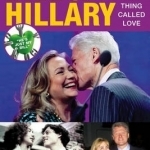
Bill & Hillary : So This Is That Thing Called Love
Darwin Porter and Danforth Prince
Book
On the campus of Yale University, in 1970, an "odd couple," Hillary Rodham and Bill ("Bubba")...

Tecarta Bible
Book and Reference
App
The Tecarta Bible is a beautiful, easy to use, full featured Bible app designed for quick...
Hazel (1853 KP) rated Secret Silver Songs in Books
Jun 28, 2020
Once again, the versatile Jordan Elizabeth returns to the fantasy/paranormal genre with a unique novel, Secret Silver Songs. With vampire-like men and demon-like creatures, the story takes the reader on a journey from an idyllic island to ruined cities, death and destruction.
Protagonist, Jemilla, is the daughter of the city's Singer - a man who can protect the city through the power of song. Life on the island is calm and peaceful; there is no crime, there is no danger, there is no fighting; so, no one was prepared for an invasion of blood-drinking Thistly. When her father is killed along with the majority of the population, there is no one left to save the island. Only men could become Singers, or so they claimed, but Jemilla is hiding a secret - she can Sing too.
At the beginning of the novel, Jemilla comes across as an anxious teenager, having been plagued by an overactive imagination for most of her life. Yet, as the story goes on, her frightening thoughts appear to be not as imaginary as she originally believed. A silver woman that no one but Jamilla can see taunts her daily and seems to want Jemilla to fail in her quest to save the island from the Thistly. Mid-story, however, alliances appear to change and Jemilla must figure out which team the silver woman is playing for and discover the truth about her home island.
From the very first chapter, Jordan Elizabeth captures the reader's attention with fast-paced action that never stills until the Epilogue. Taking aspects of history, such as rules for women written by men, the author subliminally advocates for women's rights. Secret Silver Songs demonstrates that enemies can be beaten but also that your true enemy may not be who you expect. Above all, never underestimate the power of song.
Protagonist, Jemilla, is the daughter of the city's Singer - a man who can protect the city through the power of song. Life on the island is calm and peaceful; there is no crime, there is no danger, there is no fighting; so, no one was prepared for an invasion of blood-drinking Thistly. When her father is killed along with the majority of the population, there is no one left to save the island. Only men could become Singers, or so they claimed, but Jemilla is hiding a secret - she can Sing too.
At the beginning of the novel, Jemilla comes across as an anxious teenager, having been plagued by an overactive imagination for most of her life. Yet, as the story goes on, her frightening thoughts appear to be not as imaginary as she originally believed. A silver woman that no one but Jamilla can see taunts her daily and seems to want Jemilla to fail in her quest to save the island from the Thistly. Mid-story, however, alliances appear to change and Jemilla must figure out which team the silver woman is playing for and discover the truth about her home island.
From the very first chapter, Jordan Elizabeth captures the reader's attention with fast-paced action that never stills until the Epilogue. Taking aspects of history, such as rules for women written by men, the author subliminally advocates for women's rights. Secret Silver Songs demonstrates that enemies can be beaten but also that your true enemy may not be who you expect. Above all, never underestimate the power of song.
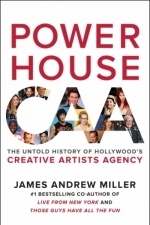
Powerhouse: The Untold Story of Hollywood's Creative Artists Agency
Book
An astonishing—and astonishingly entertaining—history of Hollywood’s transformation over the...
Biography business theatre
